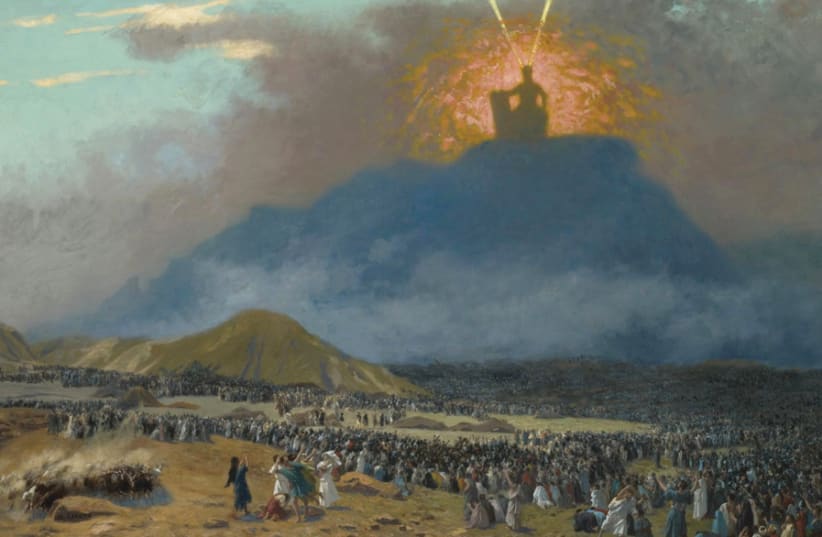At this foundational event, the Jewish nation stood at the foot of Mount Sinai and experienced a public Divine revelation – the only one in human history – during which the nation received the Ten Commandments, Judaism’s 10 basic laws, which include commandments between human beings and God, and between people. This was the event at which the Jewish people received the Torah.
But this parasha is not called “the parasha of Mount Sinai” or “the parasha of the Ten Commandments.” It is called parashat Yitro, named for Moses’s father-in-law, Jethro, a man who was not an integral part of the Jewish nation, was not part of the Exodus, and did not receive the Torah. His full title was “Jethro, the priest of Midian.” He was a priest to an idolatrous religion who came to the Israelites’ encampment in the desert after hearing rumors of the miracles and wonders they had experienced when leaving Egypt.
The parasha is called Yitro because it begins with the story of Jethro coming to the Israelites’ encampment.
What did he do when he got here? He gave Moses some good advice and essentially taught him normative ruling practices. When Jethro saw that Moses was busy from morning to night taking care of the many issues that kept coming up, he advised him to create a hierarchical system that delegated authority, with Moses at the top.
This was actually a pretty simple suggestion, but Jethro added that these delegated leaders should be “courageous men, such as fear God, men of truth, who hate unjust gain” (Exodus 18:21). Jethro understood that a governing system could be tainted by corruption, so he recommended that only people who are exalted, courageous and honest be chosen for leadership positions.
When did Jethro come to the encampment and offer this advice? Commentators have debated this for generations. Some understood that the story was presented chronologically, so if the story of Jethro coming to the encampment is written in the Torah before the account of the revelation at Sinai, it must have happened before that. However, other commentators argued that Jethro came to the encampment after the revelation at Sinai, despite the story appearing in the Torah beforehand. If so, why would the stories be written in reverse order?
It seems that the Torah was conveying a basic message to the reader: Receiving the Torah is contingent upon repairing our ways. The Torah does not come into a vacuum. It needs the tools of good traits, proper proceedings, honesty and justice. Only on this basis is it possible to receive the Torah and be uplifted in the service of God.
Our Sages formulated this principle in simple terms: “Derech eretz kadma l’Torah” (Lev. Raba, 9). Worshiping God without humaneness, privately or in the public sphere, is nothing but a defamation of God’s name. Anyone who accepts the Torah is expected to strive to meet the standards set by Jethro – to be courageous and God-fearing, a person of truth, who hates unjust gain.
This is no simple feat. It is the unending work of a lifetime. A person can always uplift himself and be better. Nevertheless, we are obligated to move forward on the right path, the path that leads to acceptance of the Torah; the path that leads to spirituality anchored in humaneness, virtuous traits, loving-kindness, and solidarity. Only thus does fit and proper Torah blossom forth.
The writer is rabbi of the Western Wall and holy sites.
